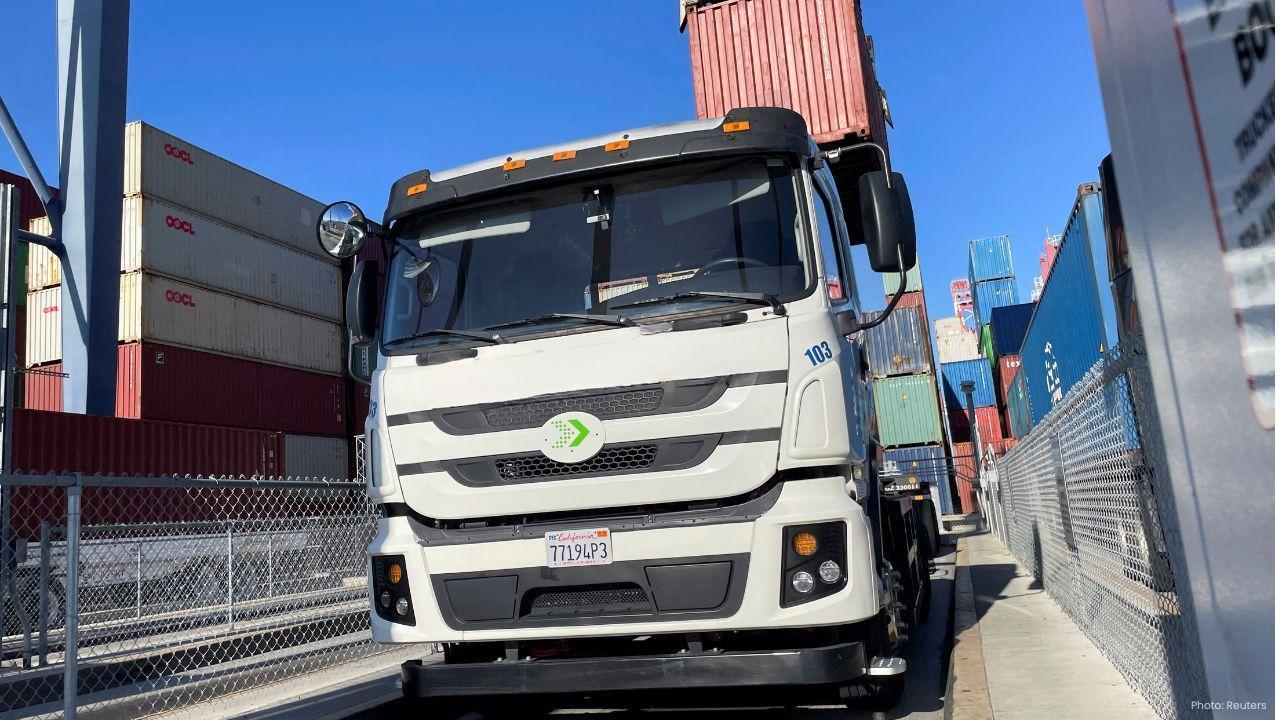
Post by : Meena Rani
Artificial intelligence (AI) is rapidly transforming supply chain logistics—from warehouse automation to driver safety in last-mile deliveries. For fleet operators under pressure to meet tight schedules, AI promises safer roads, lower costs, and smoother operations. Yet, despite widespread adoption, the impact on safety remains inconsistent.
In 2024, the U.S. recorded 39,345 traffic fatalities, marking a 3.8% decline from the previous year but still higher than pre-pandemic levels. Last-mile deliveries are particularly risky, accounting for nearly 30% of all accidents. AI-powered cameras and monitoring systems have already helped reduce distracted driving, prevent accidents, and save lives. However, their effectiveness depends on accurate, reliable AI that can detect unsafe behavior in real time.
Challenges in Fleet Safety AI
Busy delivery schedules put immense pressure on drivers, making fleet safety technology indispensable. Yet, the rapid pace of AI innovation has outstripped industry benchmarks, leaving many operators unsure about which solutions truly improve safety. In other sectors, such as medical diagnostics or autonomous vehicles, companies validate their systems through rigorous testing before deployment. In logistics, transparency is still limited.
A growing concern is the presence of “anti-benchmarking clauses” in some vendor contracts, which prevent customers or researchers from publishing performance comparisons. For example, certain clauses in Samsara’s Terms of Service restrict the release of safety performance data without written permission. Such practices can obscure gaps in performance, potentially delaying or misjudging critical driving risks.
Independent Testing: A Safer Alternative
Some companies are taking a different path. Motive, a leader in fleet safety AI, has embraced independent validation to ensure its systems deliver real-world results. In head-to-head tests conducted by the Virginia Tech Transportation Institute (VTTI), the Motive AI Dashcam alerted drivers to unsafe behavior 86% of the time, outperforming competitors whose alert rates were significantly lower.
Unlike vendors that restrict benchmarking, Motive makes the testing methodology and results publicly available and encourages side-by-side trials. This approach allows fleet operators to verify performance and make informed decisions—ultimately protecting drivers, goods, and the communities they serve.
The Need for Industry Standards
Experts stress that commercial fleets need clear, enforceable standards for AI-powered safety systems. Vendors should remove anti-benchmarking clauses, support independent third-party testing, and publish results openly. True safety cannot rely on assumptions; it requires measurable, verified performance.
For logistics operators, the stakes are high. Every delay, accident, or misjudged risk can ripple across supply chains, affecting drivers, deliveries, and communities. AI tools designed to prevent incidents must operate transparently and accountably to fulfill their life-saving potential.
As Motive demonstrates, independent benchmarking is not optional—it’s essential. For fleets, verifying AI performance is the only way to ensure that drivers return home safely, deliveries arrive on time, and streets remain safer for everyone.
Transparent AI benchmarking, Supply chain safety, Logistics technology innovation










Advances in Aerospace Technology and Commercial Aviation Recovery
Insights into breakthrough aerospace technologies and commercial aviation’s recovery amid 2025 chall

Defense Modernization and Strategic Spending Trends
Explore key trends in global defense modernization and strategic military spending shaping 2025 secu

Tens of Thousands Protest in Serbia on Anniversary of Deadly Roof Collapse
Tens of thousands in Novi Sad mark a year since a deadly station roof collapse that killed 16, prote

Canada PM Carney Apologizes to Trump Over Controversial Reagan Anti-Tariff Ad
Canadian PM Mark Carney apologized to President Trump over an Ontario anti-tariff ad quoting Reagan,

The ad that stirred a hornets nest, and made Canadian PM Carney say sorry to Trump
Canadian PM Mark Carney apologizes to US President Trump after a tariff-related ad causes diplomatic

Bengaluru-Mumbai Superfast Train Approved After 30-Year Wait
Railways approves new superfast train connecting Bengaluru and Mumbai, ending a 30-year demand, easi